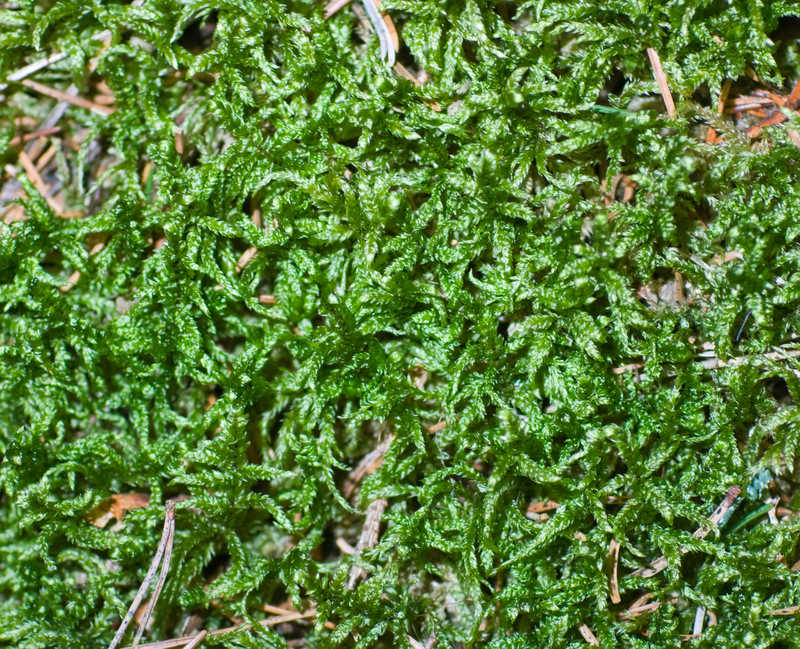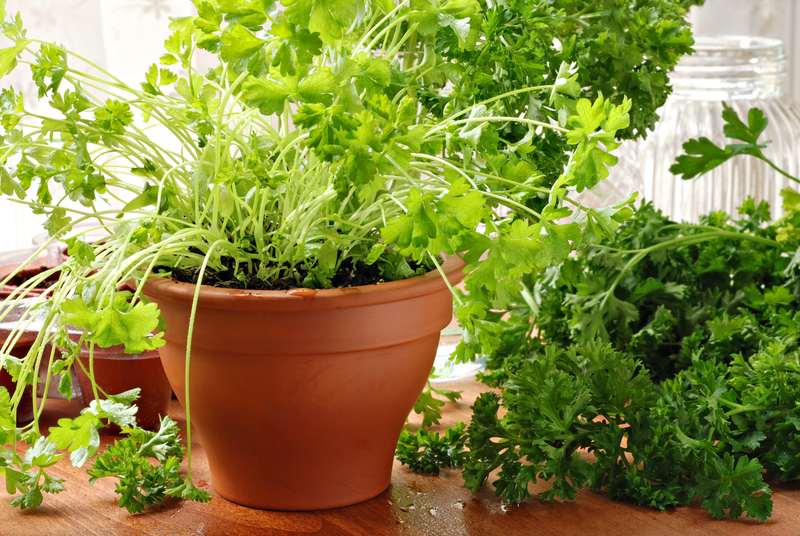Essential Methods for Winter-Proofing Garden Plants
Posted on 16/08/2025
Essential Methods for Winter-Proofing Garden Plants
As colder months approach, garden enthusiasts and plant lovers face a pressing question: How can I protect my garden plants during winter? Seasonal chills, frost, snow, and biting winds can inflict significant damage on even the hardiest of perennials. Therefore, investing time and effort into winter-proofing your garden plants is crucial for their survival and thriving spring comeback. In this comprehensive guide, we will delve into tried-and-tested techniques, practical tips, and modern solutions to keep your greenery safe during the cold season.

Why Is Winter Protection for Garden Plants Important?
Temperatures that dip below freezing, unpredictable snowfalls, and icy winds can harm plants in multiple ways. Root systems may freeze, branches can snap under snow weight, and sensitive foliage can suffer frostburn. Winter-proofing your garden plants is essential to:
- Preserve delicate perennials and shrubs
- Ensure continued growth and early blooming in spring
- Reduce the costs and efforts of buying new plants annually
- Maintain a thriving, attractive garden landscape year-round
Understanding Your Plant's Winter Hardiness
Not every plant responds the same way to cold temperatures. Before implementing winter protection methods, it's vital to determine your USDA Hardiness Zone. This will inform you of the typical minimum winter temperature in your area and which plants are likely to need extra care.
- Evergreens may need protection from drying winds.
- Perennials and bulbs might require mulching for root insulation.
- Young trees and shrubs often need shielding from frost and rodents.
- Container plants are especially vulnerable and may need relocation.
Timing: When to Begin Winter-Proofing Your Garden
A common mistake is starting too early or too late. Begin winter-proofing your garden plants after the first hard frost, but before temperatures drop consistently below freezing. This timing helps plants enter natural dormancy and ensures your protective measures are effective.
Proven Methods for Winter-Proofing Garden Plants
1. Mulching: A Natural Insulator
Mulching is one of the most effective winterization methods for garden plants. Mulch acts as an insulating blanket, regulating soil temperature and retaining moisture. Popular types of mulch for winter protection include:
- Shredded bark or wood chips
- Straw or pine needles
- Compost or well-rotted leaves
Spread a 2-4 inch thick layer around the base of your plants, but avoid direct contact with stems to prevent rot. For perennials, apply mulch after the soil has frozen to prevent premature sprouting during brief thaws.
2. Protective Plant Covers and Cloches
Physical barriers are invaluable in shielding vegetation from harsh elements. Consider these options:
- Row covers made from breathable garden fabric allow light and air to reach plants while blocking frost.
- Burlap wraps provide protection for shrubs and small trees from windburn and rodents.
- Plastic domes or cloches - ideal for smaller, tender plants and seedlings.
Secure covers with stakes or rocks to prevent them from blowing away in stormy weather. Ensure proper ventilation to avoid mold and fungal growth.
3. Watering: The Right Amount Before the Freeze
Many gardeners overlook the importance of watering before winter sets in. Well-hydrated plants are less susceptible to freeze damage because moist soil retains heat better than dry soil. Water thoroughly in late autumn, especially during dry spells, and discontinue once the ground freezes.
4. Windbreaks: Guarding Against Desiccation
Winter winds can cause excessive moisture loss from leaves and stems, a phenomenon known as desiccation. Especially for evergreens, setting up windbreaks - such as wooden screens, fencing, or temporary structures wrapped with burlap - can dramatically reduce wind exposure and prevent winter burn.
5. Lifting and Storing Tender Bulbs
Certain bulbs like dahlias, gladiolus, and cannas are not frost-proof and require special care. Follow these steps:
- Carefully dig up bulbs after the first frost.
- Allow them to dry out in a cool, airy shed.
- Store bulbs in paper bags or boxes filled with peat moss or vermiculite in a location that stays above freezing.
6. Pruning for Winter Protection
Pruning is crucial for both aesthetics and winter survival. Remove dead or diseased branches to prevent snow and ice buildup that can lead to breakage. Avoid heavy pruning of live wood right before winter; instead, focus on gentle shaping and removal of problem areas.
7. Anti-Desiccant Sprays
For evergreens and broadleaf shrubs, anti-desiccant sprays create a protective waxy layer on leaves, reducing moisture loss during the winter. Apply on a mild, dry day as part of your garden's winter-proofing routine.
8. Relocating Container Plants
Container plants are more susceptible to ice damage because their root systems are above ground. Move pots to sheltered locations, such as unheated garages, sheds, or against the house's southern wall. Group containers together and wrap them with insulating materials like bubble wrap, burlap, or horticultural fleece for extra warmth.
9. Managing Snow Accumulation
Heavy snow can snap branches and crush delicate stems. Gently brush off accumulated snow after storms, but avoid using force, which can cause more damage. For vulnerable shrubs, consider tying branches loosely together to support them against the weight of snow.
Special Winter Protection for Young and Sensitive Plants
Seedlings, young trees, and exotic species require extra vigilance. Besides mulching and covers, consider using tree guards to protect bark from rodents, sunscald, and frost cracks. For particularly sensitive specimens, construct a simple frame and drape with frost cloth or horticultural fleece.
Common Mistakes to Avoid When Winterizing Garden Plants
- Adding mulch too early can attract pests and prevent plants from hardening off.
- Neglecting to water during fall dry spells leaves plants stressed and more vulnerable.
- Sealing covers too tightly increases the risk of fungus and rot.
- Using plastic directly on plants without a breathable layer underneath traps moisture, leading to damage.
- Ignoring potted plants - portable plants are actually much more vulnerable to frostbite and should not be overlooked in your winter-proofing strategies.
Adapting to Local Conditions: Tailoring Your Approach
No two gardens are alike. Consider the microclimate of your property - factors like exposure, proximity to buildings, available sunlight, and natural windbreaks all influence your winter-proofing methods. Urban gardens, for instance, may benefit from the shelter of nearby buildings but suffer from reflected heat loss at night.
Monitor weather forecasts and be prepared to adapt quickly. A sudden cold snap may require rapid deployment of covers or extra mulch.
Long-Term Strategies for Winter-Proofing Success
Plant Selection
Choosing cold-hardy varieties for your USDA Zone is the simplest way of reducing winter risk. Consider native species, which are naturally adapted to local extremes.
Soil Health
Healthy, well-drained soil enables root systems to tolerate freezing and thawing cycles. Amend soil with organic matter annually to maintain fertility and structure.
Ongoing Mulching
While mulching is essential for winter, maintaining a regular mulching schedule year-round benefits your garden in multiple seasons.
Automatic Watering and Drainage
Consider drip irrigation systems that can be easily drained before winter, avoiding burst hoses and root rot.

Frequently Asked Questions
- What is the best way to protect roses in winter?
Mound soil or compost around the base, then pile shredded leaves or straw as insulation. In colder zones, wrap with burlap or use rose cones for additional protection. - Can I use plastic sheeting to cover plants?
Only use plastic with caution, ensuring there's an air gap or breathable fabric between the plastic and plant tissues. Direct contact can cause condensation and frostburn. - Should I continue to fertilize plants in winter?
Avoid fertilization when plants are dormant; it can trigger out-of-season growth that's vulnerable to freeze damage. - How do I prevent rodents from damaging garden plants?
Install wire mesh around young tree trunks, use repellents, and clear away mulch from tree bases to discourage nesting.
Conclusion: Shielding Your Green Oasis All Year Round
Proper winter-proofing protects your garden plants not only from immediate cold threats but also sets the stage for a lush and vibrant spring. By combining the methods explained above--mulching, covering, strategic watering, and long-term planning--you can enjoy peace of mind and healthy plants, season after season. Prioritize knowledge of your garden's unique needs, stay observant for changing conditions, and remember: an ounce of prevention is worth a pound of cure.
With diligent winter garden protection, you'll be rewarded with resilient plants eager to greet warmer days. Safeguard your investment and enjoy the beauty of your garden, no matter what winter sends your way!

